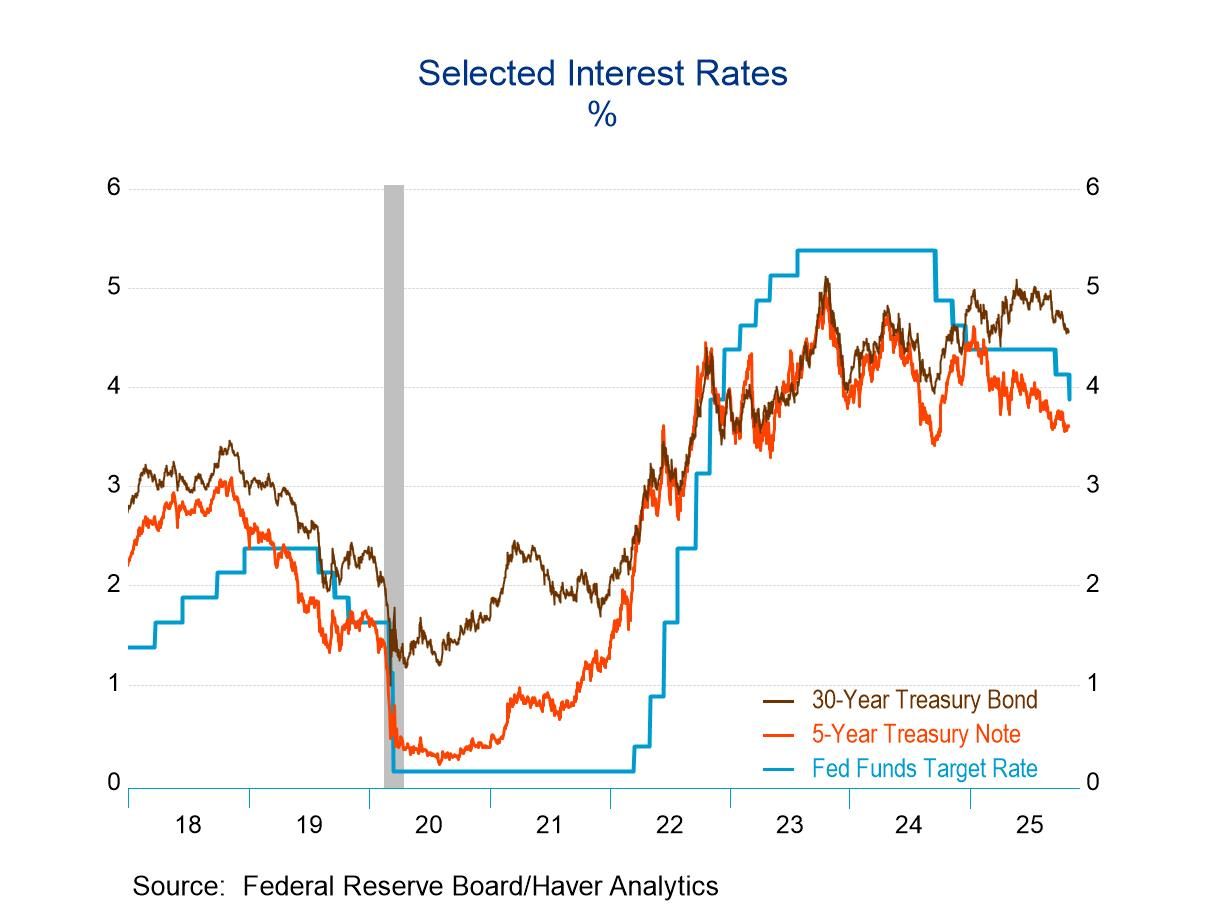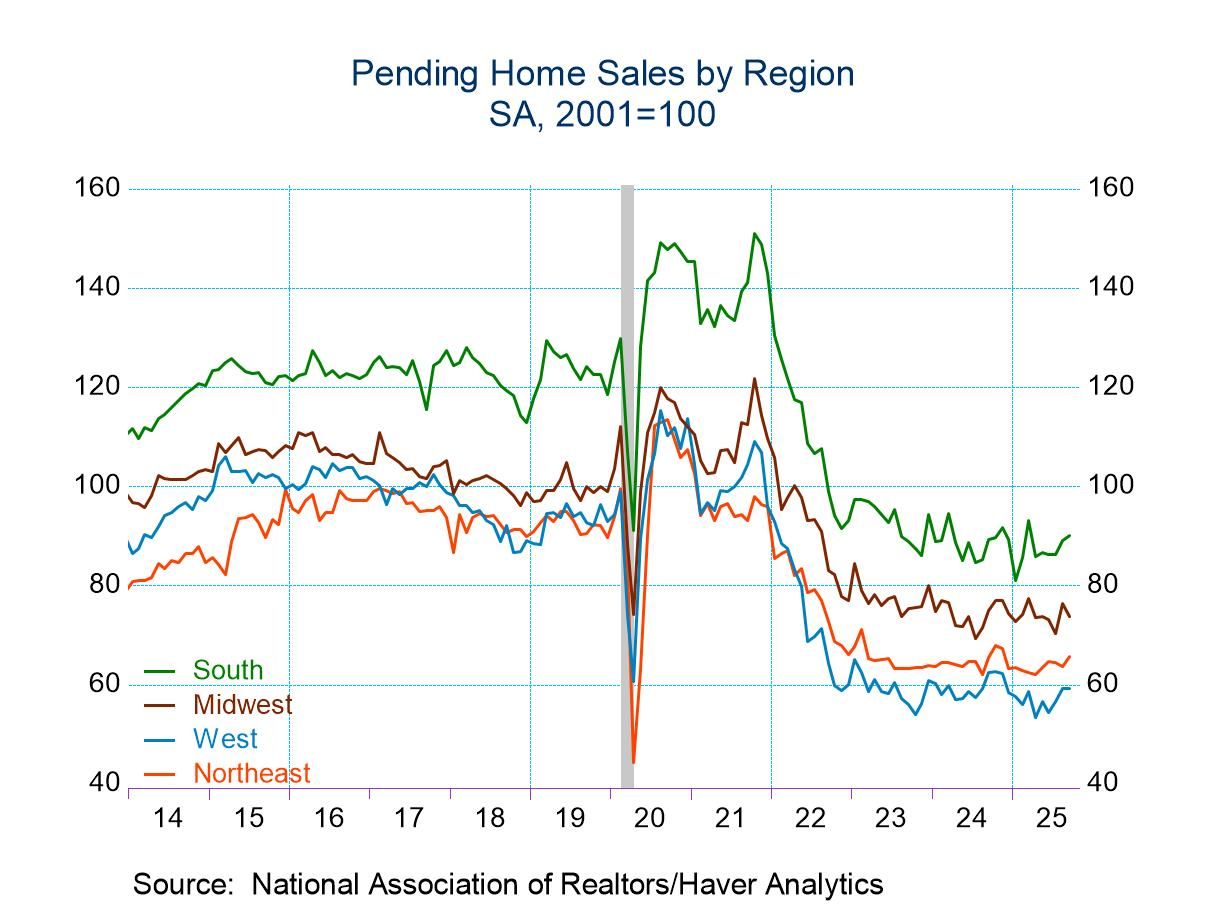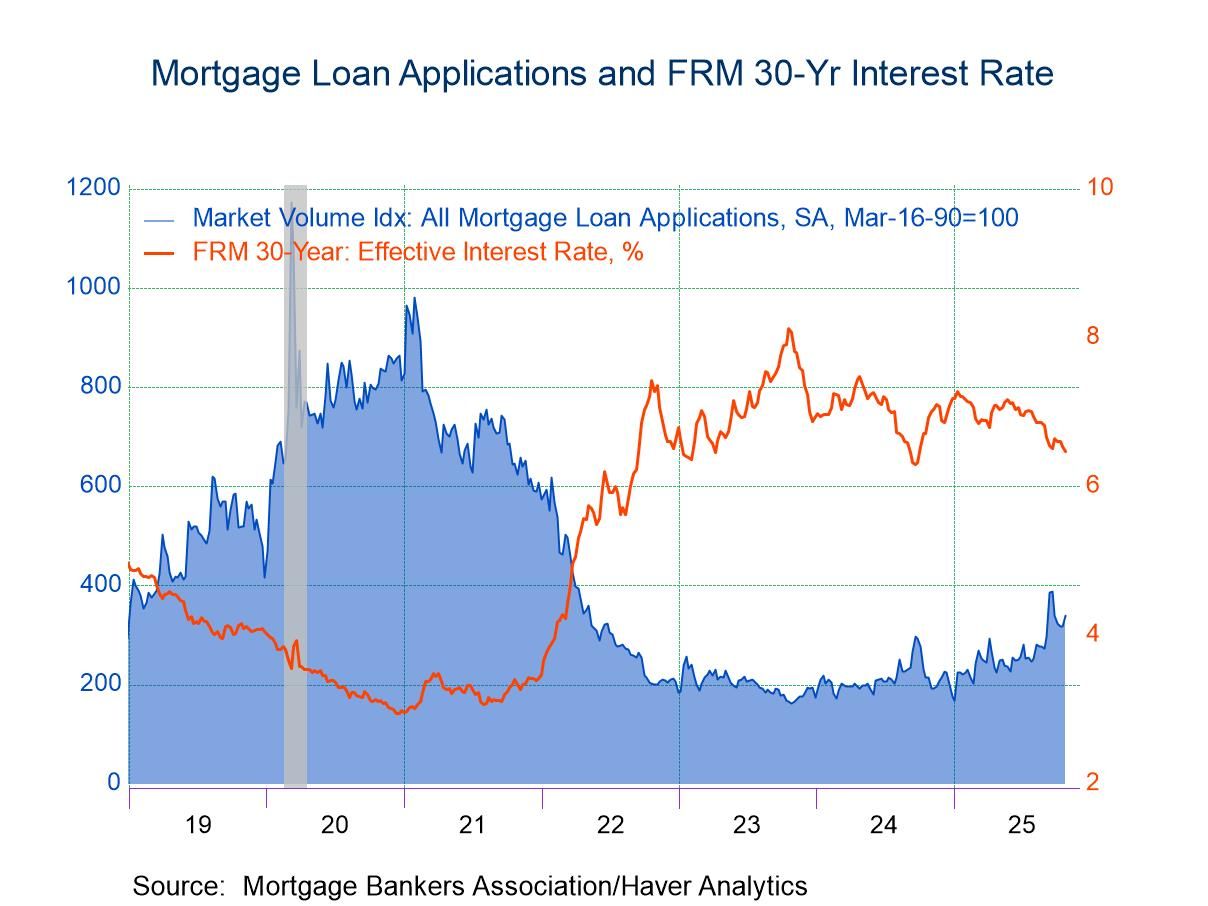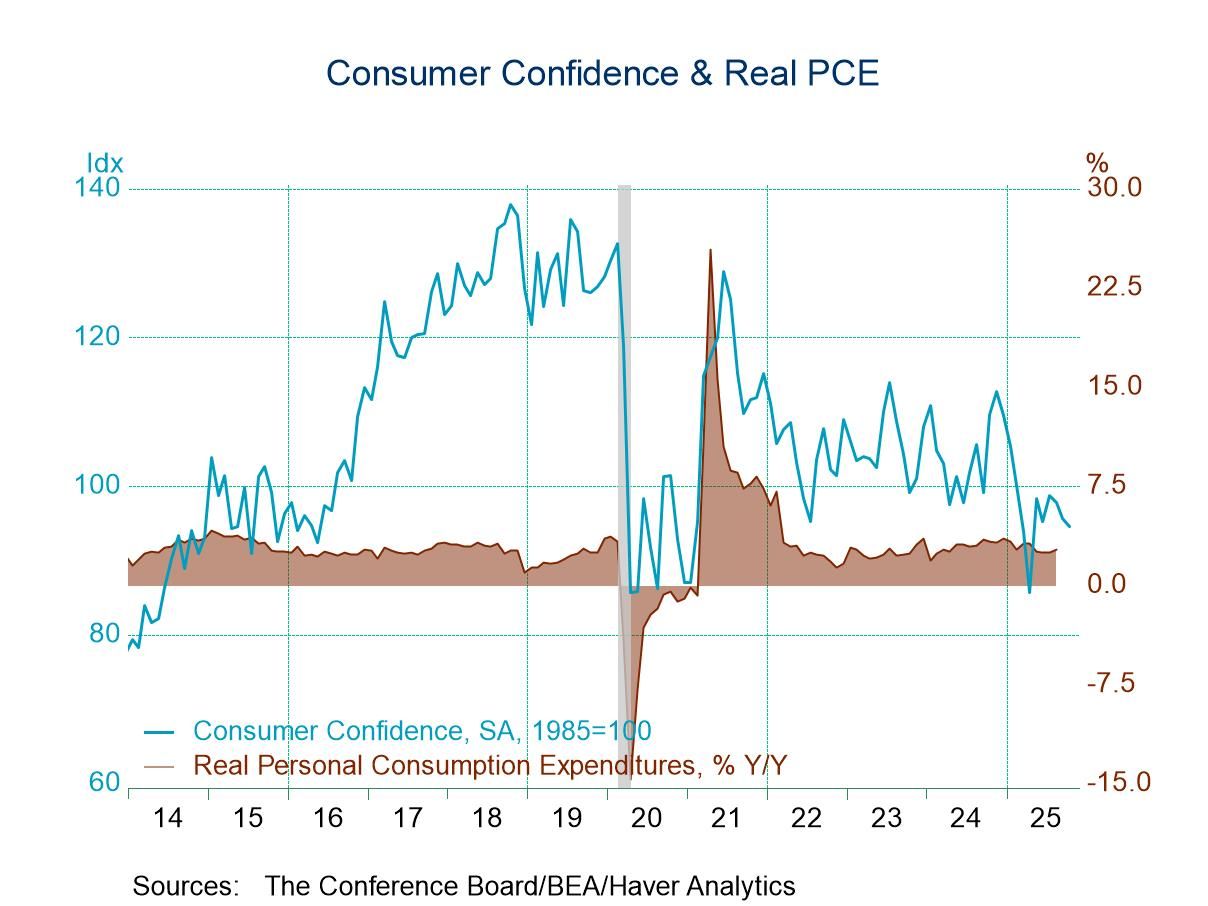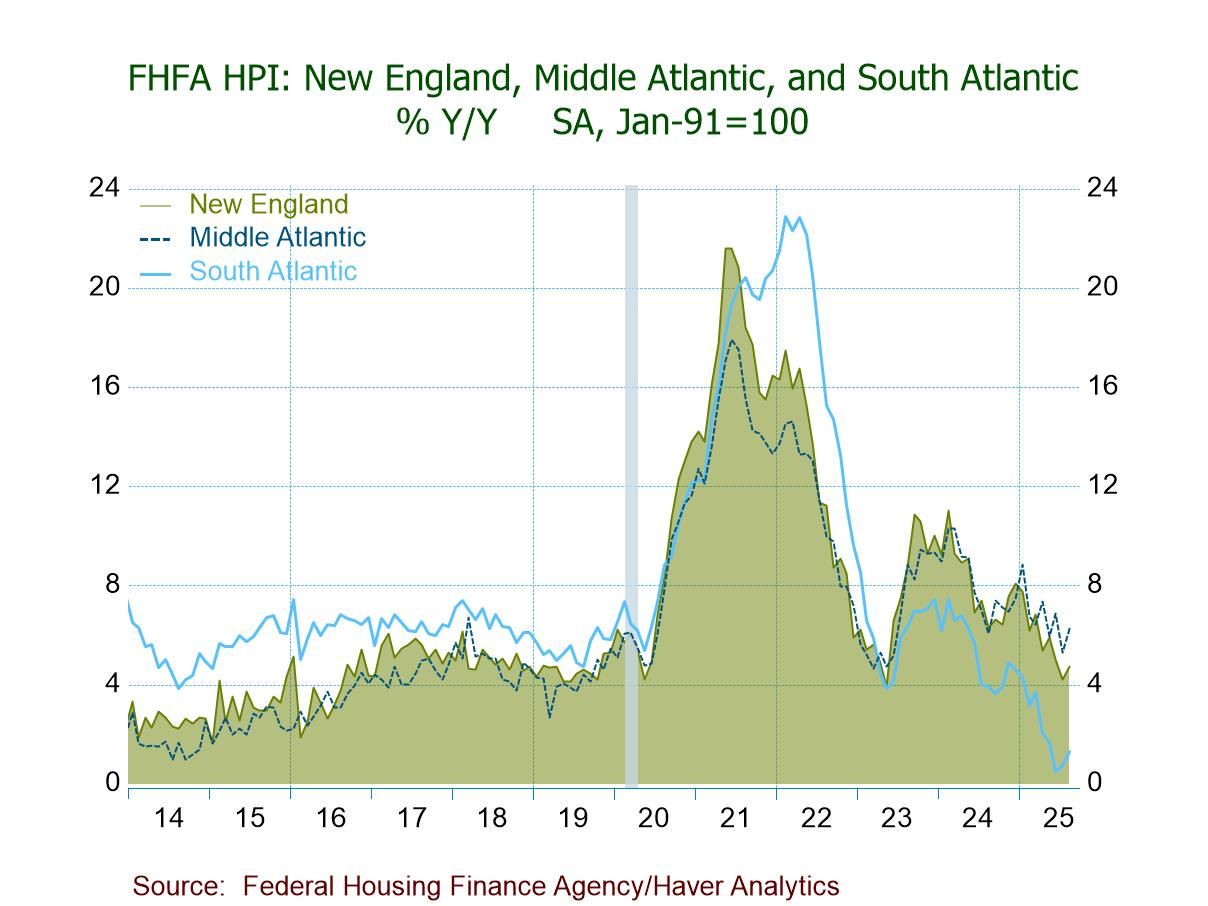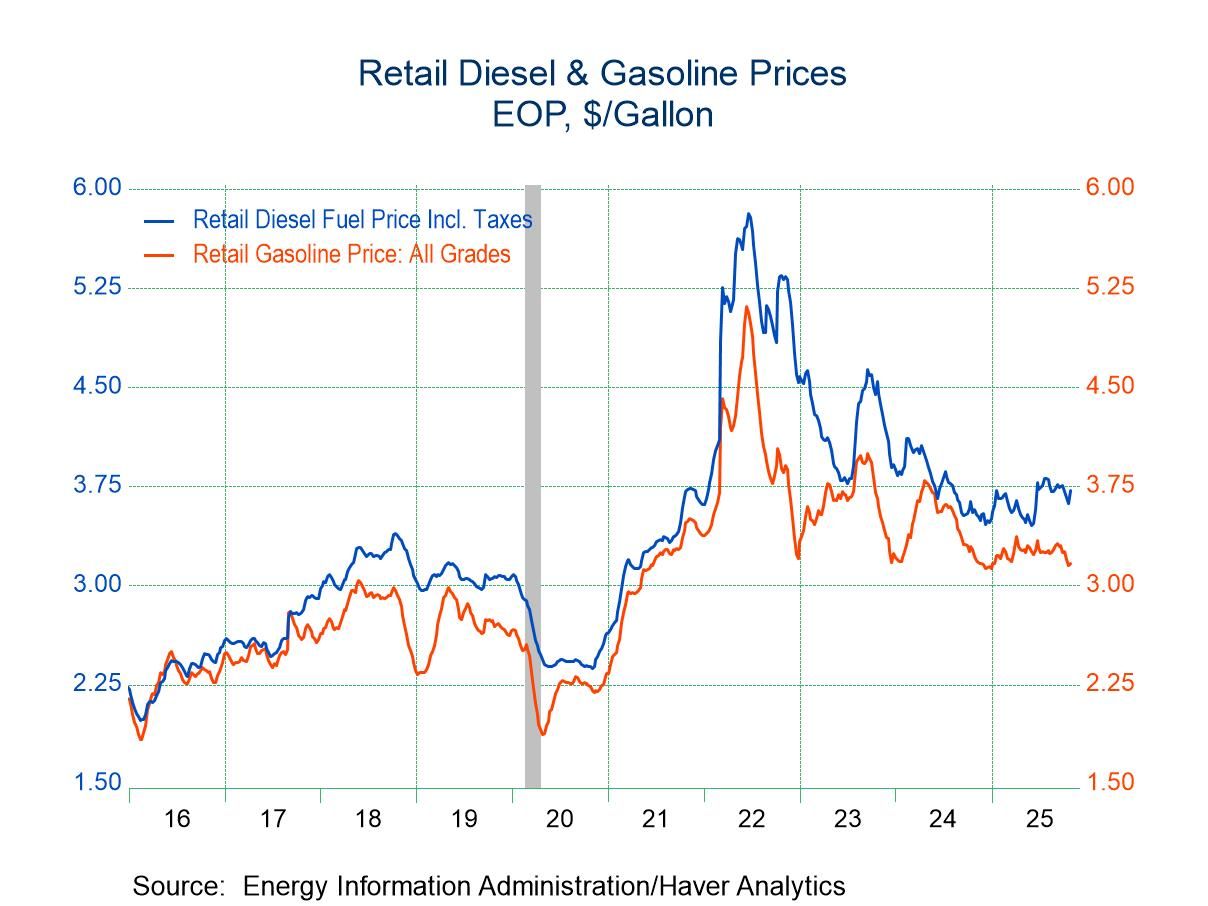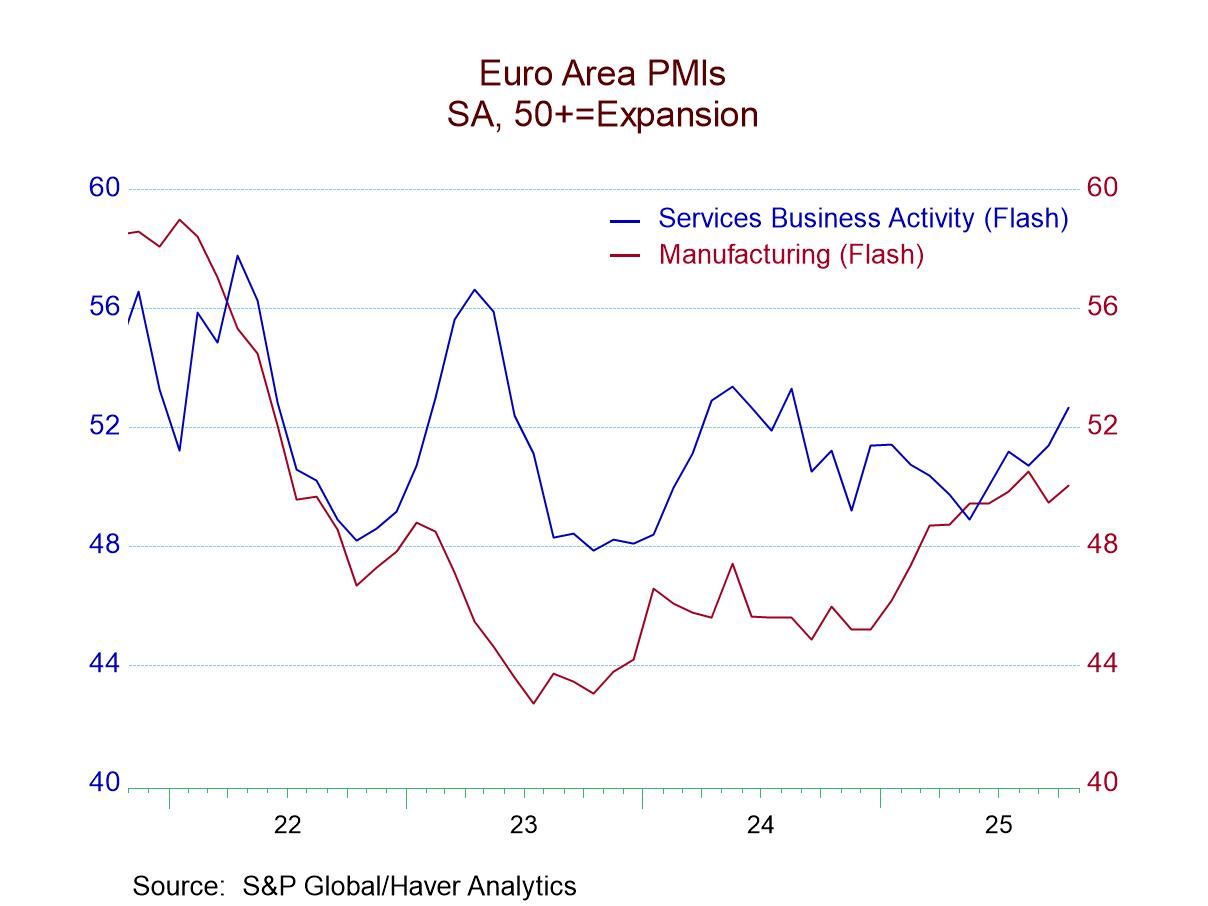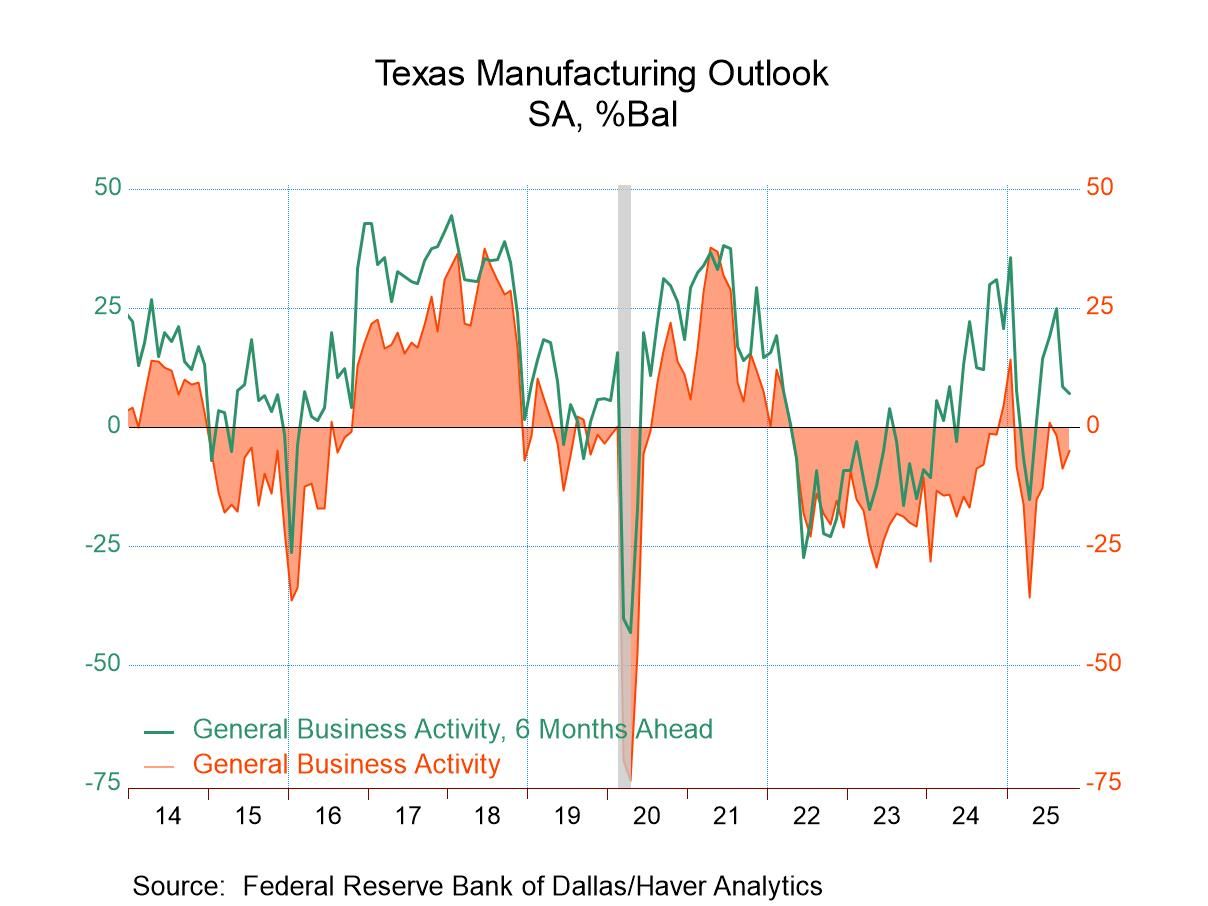- FOMC lowers funds rate target by quarter point for second time this year.
- The decision was approved by all but two FOMC voters.
- Asset purchases to end.
- USA| Oct 29 2025
FOMC Reduces Fed Funds Rate Target as Expected
by:Tom Moeller
|in:Economy in Brief
- Sales remain at highest level since March.
- Year-to-year date sales rise modestly.
- Regional changes are mixed.
by:Tom Moeller
|in:Economy in Brief
- USA| Oct 29 2025
U.S. Mortgage Applications Rebounded on Further Decline in Rates
- Applications increased 7.1% w/w, their first weekly gain in five weeks.
- Both applications for purchase and for refinancing rose.
- Fixed mortgage interest rates continued their general downtrend.
by:Sandy Batten
|in:Economy in Brief
- USA| Oct 28 2025
U.S. Consumer Confidence Falls Further in October; Inflation Expectations Edge Higher
- Confidence level is lowest in six months .
- Present situation index increases but expectations decline.
- Inflation expectations remain contained.
by:Tom Moeller
|in:Economy in Brief
- FHFA HPI +0.4% m/m (+2.3% y/y) in August vs. -0.04% m/m (+2.4% y/y) in July.
- House prices up m/m in seven of nine census divisions but down in Pacific (-0.8%) and West South Central (-0.2%).
- House prices up y/y in eight of the nine regions, w/ the highest rate in Middle Atlantic (+6.3%) and a drop in Pacific (-0.6%).
- USA| Oct 28 2025
U.S. Energy Prices Rise in Latest Week
- Gasoline prices edge higher.
- The price of WTI crude oil improves.
- Natural gas prices rebound.
by:Tom Moeller
|in:Economy in Brief
- Europe| Oct 28 2025
Composite PMIs Mostly Improve in October
An upswing appears to be underway with both manufacturing and services readings improving. The S&P PMI data for October covered eight different reporters, five of which improved in October compared to September. September had been an extremely weak set of readings; out of the 24 different categories (eight countries with three readings each), there were only five that improved in September compared to August. August had been a strong month. The survey clearly is showing some volatility over these past few months; however, in October we're seeing a fairly broad-based increase, with only nine of the 24 detailed categories that assess the composite, manufacturing, and services showing weaker performance compared to September. And of those comparisons across eight countries, 19 sectors and composite indexes had been weaker month-to-month in September compared to August.
Over three months the averaged composites are stronger compared to six-month average. Among all the reporters, only three of the 24 sectors and composite readings show weakness in three-months compared to six-months. Each of those weakening readings is for manufacturing. They involve weaker manufacturing in Japan, in Australia, and in the United States. Ten of 24 sectors and composite readings weaken over six months compared to 12-months. Only 7 detailed readings out of 24 weaken over 12 months compared to 12-months before based on comparing averages.
Queue percentile standings take the October values and rank them in a queue of data back to January 2021 expressing the standing in October as a percentile in that queue of readings. The average percentile standing for the composite indexes in October is at 55.6%. The average manufacturing sector’s queue standing at 52.2% while the average services rating is at 54.1%. In October, all of the readings averaged across the 8 reporters are above their medians for the period back to January 2021 compared across monthly data. That's not an exceptionally strong performance, but it's a solid performance. Among the reporting countries, only Japan, the United Kingdom, and France have composite standings that are below their medians (that is, they have ranked standings for their respective composites below their 50th percentile).
The average standing across the 8 reporters in October generally shows an improvement from September; September was weaker than August. With that, October values, while higher month-to-month, were lower than they were in August. For example, the overall composite in October moved up to 52.8 from 52.5 in September, but September had fallen from 53.9. Values in October are still below values in August. The same thing is true of services and manufacturing.
The average sequential data for 3-months, 6-months and 12-months, however, show steady improvement with composite readings rising from 51.8 for 12-months to 51.9 over six months and to 52.6 over three months. These calculations are performed only on hard data and are up to date through September. The October monthly reading for the composite, for manufacturing and for services are stronger for each of these readings in October compared to three-month averaged values ended in September paving the way for continued improvement ahead.
Overall, the sense of improvement here is slow. Compared to January 2021, the October readings are stronger for composite and for services but weaker for manufacturing; that sector is taking longer to recover. Still, recovery seems to be in gear; if that remains the case, central banks may have to rethink their programs of ongoing interest rate cuts.
- USA| Oct 27 2025
Texas Manufacturing Activity Index Remains Negative; Expectations Deteriorate in October
- Current Conditions Survey is negative for eighth month in last nine.
- Production, new orders, shipments & employment stay sluggish.
- Wages & benefits weaken; prices ease.
by:Tom Moeller
|in:Economy in Brief
- of2681Go to 11 page


